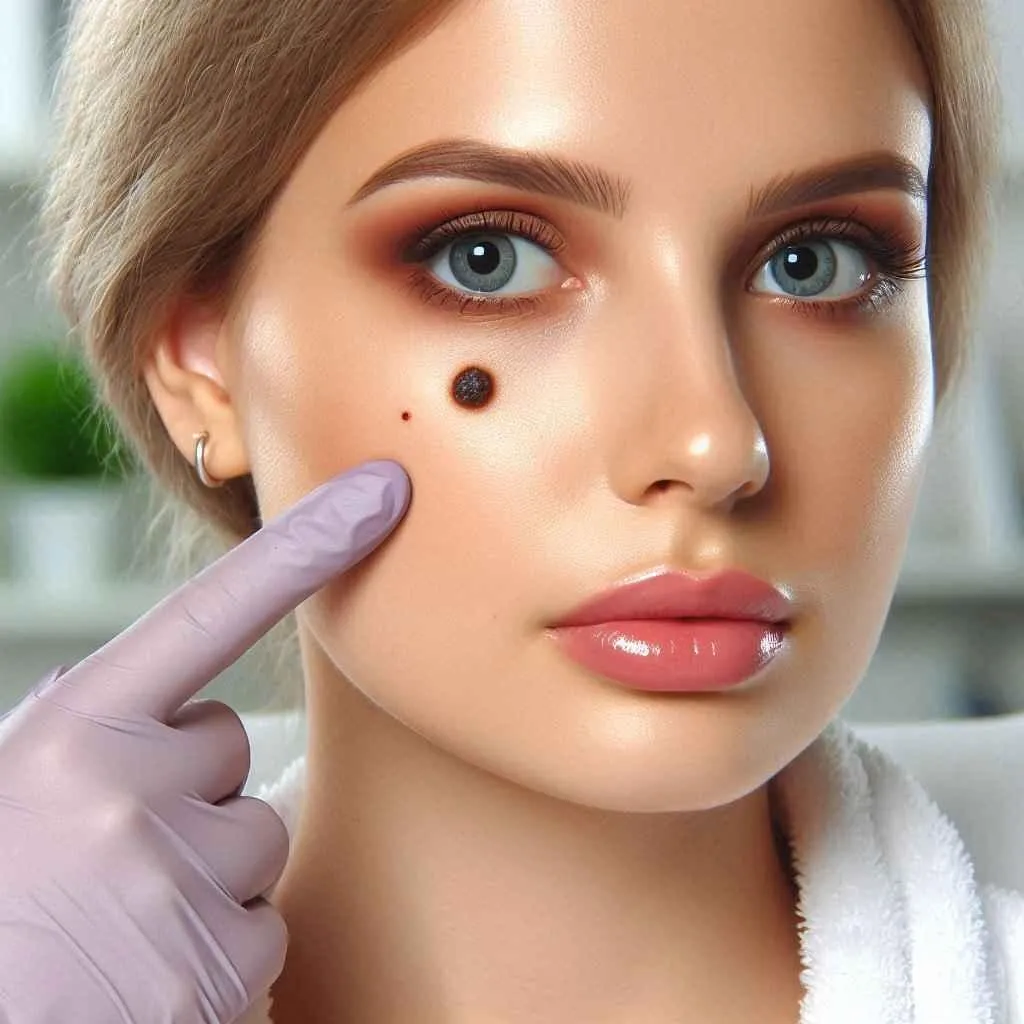St. Pete Location
Bradenton Location
Patient Education
We're passionate about helping people achieve their healthiest, happiest skin. Whether you're struggling with acne, eczema, rosacea, or any other skin concern, we're here to offer support, information, and inspiration.

Discover the Best Mole Removal at St Pete: Expert Care for Your Skin
Introduction
Moles, those small clusters of pigmented cells that dot our skin, are a common feature for most people. While often harmless, some moles can raise concerns, whether for medical reasons or cosmetic preferences. As dermatological science progresses, so do the techniques for mole removal. This blog explores the latest advancements in mole removal, with a special focus on the expert services provided at My Skin St Pete.
Understanding Moles
Before diving into removal techniques, it's essential to understand what moles are and why someone might want to remove them. Before diving into removal techniques, it's essential to understand what moles are and why someone might want to remove them. Moles, which doctors sometimes refer to as nevi, are essentially small gatherings of pigment-producing cells in our skin. These collections often show up as tiny, darker patches on our body's surface. They can vary in size, shape, and color, but most people recognize them as those little brown or black spots that dot our skin here and there. While most moles are harmless, some can develop into skin cancer, particularly melanoma (1,2).

Traditional Mole Removal Techniques
Surgical Excision
Surgical excision remains one of the most common and effective methods for mole removal. This technique involves cutting out the entire mole and a small margin of surrounding skin. It's particularly useful for larger moles or those that need to be examined for cancer (2).
Shave Excision
For moles that are raised above the skin's surface, shave excision is often used. This method involves using a surgical blade to shave off the mole at the level of the surrounding skin. It's less invasive than surgical excision but may not be suitable for all types of moles(2).
Advanced Mole Removal Techniques
Laser Mole Removal
Laser technology has become increasingly popular for mole removal, especially for cosmetic purposes. While it may not completely remove the mole, it can significantly diminish its appearance. However, it's important to note that laser removal may make it more difficult to monitor the mole for any cancerous changes in the future.
Radiofrequency Mole Removal
Radiofrequency (RF) devices offer another option for mole removal. This technique uses high-frequency electrical currents to remove the mole. One advantage of RF removal is the ease of hemostasis, as the device can quickly switch to coagulation mode. However, the cosmetic results may not be as refined as other methods due to the energy transfer to surrounding areas (3).
Emerging Therapies
Genetic Therapy for Mole Reversal
In a groundbreaking study published in 2024, researchers at UCL, the Francis Crick Institute, and Great Ormond Street Hospital developed a genetic therapy that could potentially reverse large moles associated with congenital melanocytic naevus syndrome (CMN) (1,4,6).
This innovative treatment uses silencing RNA (siRNA) to target the mutated NRAS gene in mole skin cells. When injected into mice models of CMN, the therapy significantly reduced the expression of mutant NRAS within two days. The silencing effect triggered apoptosis in the CMN moles, causing them to 'self-destruct'4.
While this therapy is still in the research phase, it shows promise for treating not only CMN but potentially other types of at-risk moles as an alternative to surgery.
Choosing the Right Method
When considering mole removal, it's crucial to consult with a dermatologist or qualified healthcare provider. They can assess the mole and recommend the most appropriate removal method based on factors such as:
Size and location of the mole
Whether the mole is suspicious for cancer
The patient's aesthetic goals
Potential for scarring
Mole removal at My Skin St Pete offers a range of these treatment options, ensuring patients receive personalized care tailored to their specific needs.
The Importance of Professional Removal
While there are many DIY mole removal products on the market, it's crucial to have moles removed by a healthcare professional. Attempting to remove moles at home can lead to several risks, including:
Infection
Scarring
Incomplete removal
Missed diagnosis of skin cancer
Professional mole removal ensures that the procedure is done safely and that the removed tissue can be examined for any signs of cancer (5).
Post-Removal Care
After mole removal, proper care is essential for optimal healing and minimal scarring. This typically involves:
Keeping the area clean and dry
Applying antibiotic ointment as directed
Protecting the area from sun exposure
Monitoring for signs of infection or abnormal healing
The Future of Mole Removal
As research continues, we can expect to see even more advanced techniques for mole removal. The genetic therapy developed for CMN is particularly exciting, as it could potentially lead to non-invasive treatments for various types of moles and skin conditions (1,4,6).
Mole Removal at My Skin St Pete

My Skin St Pete offers professional mole removal services as part of their comprehensive dermatological care. Located in downtown St. Petersburg, Florida, this clinic provides expert treatment for various skin concerns, including the removal of moles, skin tags, and other lesions (1,3).
Leah Michel, a Board-Certified Nurse Practitioner at My Skin St Pete, is trained in the latest techniques for safe and effective mole removal. The clinic uses advanced technology to remove moles from any location on the body, with local anesthetic available to ensure a virtually painless procedure (1).
The Mole Removal Process
At My Skin St Pete, the mole removal process typically involves the following steps:
Consultation: A thorough examination of the mole and review of the patient's medical history.
Assessment: Determination of the best removal method based on the mole's size, location, and characteristics.
Procedure: Removal of the mole using appropriate techniques, which may include surgical excision or shave removal.
Aftercare: Instructions for proper wound care and follow-up appointments as needed.
The clinic emphasizes the importance of having moles professionally evaluated and removed, as some moles can be indicators of skin cancer (1,3).
Why Choose My Skin St Pete for Mole Removal
Expertise: The clinic's staff, including Leah Michel, APRN, FNP-BC, specializes in dermatology and has extensive experience in mole removal (3)
Comprehensive care: My Skin St Pete offers both medical and cosmetic dermatology services, allowing for integrated treatment plans (5).
Advanced techniques: The clinic uses state-of-the-art technology to minimize scarring and ensure optimal results (1).
Patient comfort: Local anesthesia is available to make the procedure as comfortable as possible1.
Convenient location: Situated in downtown St. Petersburg, the clinic is easily accessible for local residents.
For those concerned about moles or other skin lesions, My Skin St Pete provides a professional and caring environment for evaluation and treatment. Patients can schedule an appointment by calling (727) 295-7223 or visiting their website.
Conclusion
Mole removal has come a long way from simple surgical excision. Today, patients have access to a variety of techniques, from traditional surgery to advanced laser and genetic therapies. Mole removal at St Pete clinics offers state-of-the-art treatments, ensuring patients receive the most appropriate and effective care for their individual needs.
As with any medical procedure, it's essential to consult with a qualified healthcare provider to determine the best approach for your specific situation. With ongoing research and technological advancements, the future of mole removal looks brighter than ever, promising safer, more effective, and less invasive treatments for patients worldwide.
References
Researchers discover potential mole reversal therapy in rare condition. (2025, January 26). ScienceDaily.
Cleveland Clinic. (2024, May 1). Mole Removal: Surgery, Aftercare & Scars.
Surgical removal of moles. (2021, July 19). Cosmoderma.
Silencing Genes to Make Moles Self-Destruct. (2024, June 26). RegMedNet.
California Skin Institute. (2020, September 29). Removing Moles is Not DIY — Here's Why.
Researchers discover potential mole reversal therapy in rare condition. (2024, June 17). Medical Xpress.
Disclaimer:
The information on this website is provided for educational and information purposes only and is not medical advice. Always consult with a licensed medical provider and follow their recommendations regardless of what you read on this website. If you think you are having a medical emergency, dial 911 or go to the nearest emergency room. Links to other third-party websites are provided for your convenience only. If you decide to access any of the third-party websites, you do so entirely at your own risk and subject to the terms of use for those websites. Neither My Skin by Leah Michel, APRN, FNP-BC, nor any contributor to this website, makes any representation, express or implied, regarding the information provided on this website or any information you may access on a third-party website using a link. Use of this website does not establish a doctor-patient relationship. If you would like to request an appointment with a health care provider, please call our office at (727) 295-7223.
If you have any questions or concerns about your skin & would like to schedule an appointment at our St. Pete dermatology office or Brandenton dermatology office, please call us today!
St. Pete Location
111 2nd Ave NE., Suite 1406
St Petersburg, FL 33701
Plaza Tower- Downtown St Pete
Phone: (727) 295-7223
Bradenton Location
4301 32nd St. W., Suite D2
Bradenton, FL 34277
Phone: (941) 330-5805






